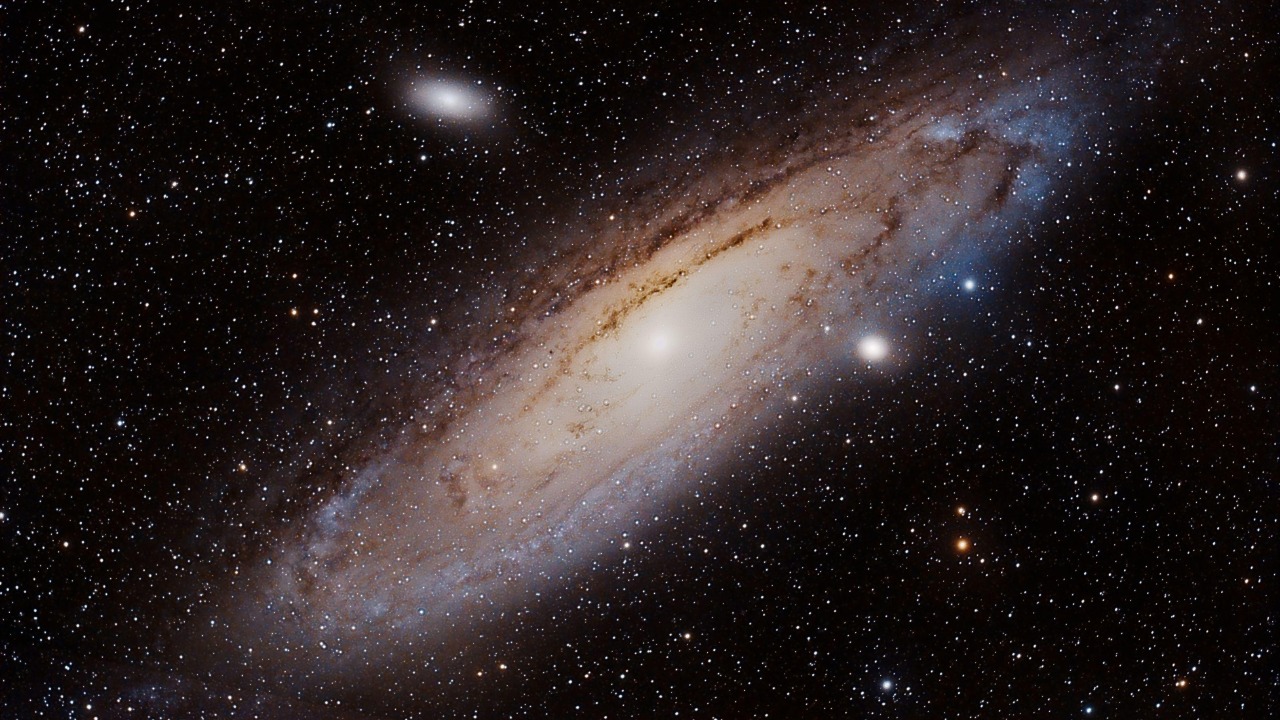
The Andromeda galaxy, our closest spiral neighbor to the Milky Way, becomes prominently visible in the night sky during October 2025, making it an ideal month for stargazers to observe this stunning cosmic feature without the interference of summer’s brighter lights or winter’s harsher cold. Located in the constellation Andromeda, this galaxy spans about 220,000 light-years across and is hurtling toward our own at around 250,000 miles per hour, offering a rare chance for naked-eye viewing under clear autumn skies. Recent guides emphasize that from mid-northern latitudes, it rises high enough after dark by October 15, 2025, to spot as a faint, cigar-shaped glow even in light-polluted areas (Space.com).
Understanding the Andromeda Galaxy
The Andromeda galaxy, known as the closest spiral galaxy to the Milky Way, boasts a diameter of approximately 220,000 light-years. It is classified as a barred spiral galaxy, featuring a bright core that can be seen with the unaided eye under dark skies. This galaxy’s impressive size and structure make it a fascinating subject for both amateur and professional astronomers alike (EarthSky).
Located in the constellation Andromeda, this galaxy is cataloged as Messier 31 or M31. Historically, ancient astronomers observed it as a “nebula” before the advent of modern telescopes revealed its true nature as a galaxy. This historical context underscores the advancements in astronomical technology and our growing understanding of the universe (EarthSky).
Andromeda is moving toward the Milky Way at a speed of 250,000 miles per hour, with a projected collision in about 4 billion years. This future event will result in the merging of the two galaxies, although it is expected to occur without harm to individual stars. This impending cosmic dance highlights the dynamic and ever-changing nature of our universe (EarthSky).
Optimal Viewing Conditions in October
October 2025 presents an optimal opportunity for observing the Andromeda galaxy as it rises earlier in the evening, reaching peak visibility around 10 p.m. local time from northern hemispheres. This timing is due to Earth’s orbital alignment, which reduces twilight interference and allows for clearer views of the night sky (Space.com).
The seasonal advantages of October, such as cooler temperatures and clearer autumn air, minimize atmospheric distortion compared to the humid summer months. This results in better contrast for viewing faint deep-sky objects like the Andromeda galaxy. These conditions make October a favored time for astronomers and stargazers to explore the night sky (Space.com).
On October 15, 2025, at 19:00:00.000Z, the galaxy will be at its most accessible post-sunset position for observers in mid-latitudes. This specific timing offers a prime opportunity for those eager to witness Andromeda’s celestial beauty without the interference of city lights or unfavorable weather conditions (Space.com).
Finding the Andromeda Galaxy in the Night Sky
Locating the Andromeda galaxy can be a rewarding experience for stargazers. To find it, one can draw an imaginary line from the Great Square of Pegasus to the top of the constellation Cassiopeia. The galaxy appears as a hazy patch about three times the width of the full moon, making it a distinctive feature in the night sky (MLive).
For the best viewing experience, it is recommended to observe from dark-sky sites away from city lights, facing northeast after midnight in early October. Using binoculars can help resolve its oval shape and reveal its satellite galaxies, such as M32 and M110. These tools enhance the viewing experience, allowing observers to appreciate the galaxy’s intricate details (MLive).
On October 24, 2021, similar conditions allowed naked-eye views of Andromeda’s “cool looking” structure during a clear week. This pattern is expected to repeat in 2025, with even better lunar phases enhancing the visibility of this magnificent galaxy (WHSV).
October 2025 Sky Events Enhancing Andromeda Observations
October 2025 offers a variety of celestial events that complement the observation of the Andromeda galaxy. The waxing gibbous moon on October 15, 2025, provides soft illumination without washing out faint galaxies. Additionally, nearby clusters like the Pleiades add to the richness of the night sky, offering a captivating backdrop for stargazers (Sky at Night Magazine).
The month’s meteor showers, such as the Orionids peaking around October 21, 2025, can enhance Andromeda viewing by drawing attention to the depth and beauty of the autumn sky. These meteor showers provide dynamic and engaging spectacles that captivate observers and enrich the stargazing experience (Sky at Night Magazine).
To maximize contrast for spotting Andromeda’s disk, it is advisable to avoid full moon nights on October 7 and 21, 2025. This strategy ensures that observers can fully appreciate the galaxy’s details amid other deep-sky targets like the Double Cluster in Perseus, making for a fulfilling astronomical adventure (Sky at Night Magazine).